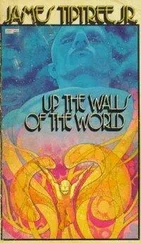Read this preface to the end of time very carefully! Pore over each and every word and sentence, sift through the blank spaces and the silences in between. Close your eyes, focus all your concentration on our time, our age, and take a deep breath, a very deep breath. Breathe in the sun, the radiant, fiery ball that’s fixed in the sky. Take it all into your lungs: after all, the sun’s the only thing that connects us into harmony with time and space. Lie down on your back and relax. Forget the here and now and ponder the immortal Lord of Time, Shiva. The present moment is ephemeral, a mirage. Now place your right thumb between your two eyebrows and place your index finger on your forehead. Yes, good! Very good! Remain still, very still. And as soon as you do this — pop! — a little burst rushes forth, and the mystery of all life and creation and the universe will appear in front of you in the dim light of your own consciousness.
And after being liberated by your deep encounter with time, you too, like Chankrakant Thorat and me, will begin to wait for the great flood, the inescapable and omnivorous fire.
To anticipate the apocalypse.
To await Armageddon.
To hold on for a great new revolution, the likes of which has never been seen before.
The massive destruction that’s essential for anything new to rise up.
The mad volley of an age, of which a new epoch is born. A new civilization comes into existence. After the present fades into oblivion, everything can begin anew. A revolutionary moment marking the end of now and the beginning of to be.
Ah! And on that day, on a tiny, green leaf of a pipal or banyan or wishing tree, swims a little baby, screaming and swimming on top of the gigantic waves in a vast, fearsome ocean that’s swallowing all the earth and all creation into its belly. The sound of the baby’s weeping and wailing echoes throughout the whole universe.
Waaaah! Waaaah!
On a primitive wooden boat, without rudder or paddle… atop the churning tide, silently floating… flickering in the distance.
Ah! That wooden boat is very old… slowly floating off into the distance…
Oh, yes, I forgot to tell you something about Chandrakant and me… it’s that our head — yes, the round head that every living man has on his shoulders — it’s become big, and is continuously getting bigger. Doctors say it’s an incurable disease…
And the disease is called — ‘Mangosil.’
And it’s a disease for which medical scientists know no cure. Neither allopathic doctors, homoeopathic doctors, nor ayurvedic doctors. And nothing in Baba Ramdev’s Yoga and Pranayama Breathing Exercises to Tackle All Diseases. It’s true, an old fakir (you can find him at the shrine of Amir Khusrau, ‘the other master’) once said that there is a book in which its cure does indeed exist. But with a heavy sigh, he added that the problem was that this book is yet to be written.
For the past several years, both Chandrakant Thorat and I have carried the burden of our big heads on our shoulders, ever in search of that book. The fakir, whose eyes were red like the eyes of fire ants, creatures the creator did not give the capacity for sleep, animals that do not slumber once in their entire lives, insects that continuously carry thirty times their own body weight, or more; this fakir said, ‘A curse of rain and ruin on those who pen books of wickedness by their own hand and claim it the writ of Allah. And on those who claim that these books will bring an end to the sorrows and trials of man. Ruin will come to those who write these books, and ruin will befall those who profit from them.’
The fakir added, as he was leaving, ‘Look at your own life, and at the lives all around you. One day, on your own, you will stumble upon that book. But remember this: in it, you will find fire and water. And you will find a leaf or a boat above the tip of a flame, or the top of a wave, somehow swimming, somehow surviving. And you will hear a voice — a voice that will give birth to all other voices in the world that comes after.’
Chandrakant and I, carrying the burden of our heavy heads of bottomless sorrow on our shoulders, have been in constant search for that book.
You can see for yourselves: our eyes are red like the eyes of fire ants. We aren’t blessed with the capacity to sleep, and, in our life, we’re carrying thirty times our own weight. Are you watching? Can you see the blood that pours forth beyond the bounds of our speech? The same words that bring nothing but punishment without pause! Time and again, we’re forced to leave town. Place after place, they’re kicking us out.
Words that, one day, will give rise to all the world’s languages. Because the old fakir with eyes as red as a fire ant, sitting that day in front of the minor court of Hazarat Nizzumaddin — the shrine of Amir Khusrau, the first poet of the language we now call Hindi, said so. JAHANGIRPURI BYLANE NUMBER SEVEN
Buttressed by what is said to be the largest fruit and vegetable market in Asia lies a neighbourhood in Northwest Delhi — Jahangirpuri. If you’re travelling between India and Pakistan on the Goodwill Bus, you’ll see what looks like a residential area right before the bypass road on the left hand side — rising up from the mud and the muck, that’s Jahangirpuri. But from a distance the land between the highway and the settlement doesn’t seem to be made of simple blackened ooze, dirt and water, but instead from a chemical mix consisting of a molten solution of motor oil, grease, gasoline, and plastic. Might as well throw in the rotting organic matter from the fruit and vegetables as well.
Jagangirpuri was most assuredly settled without a planning map. Over many years, people showed up, built a house wherever they found some space, and settled down. In the surrounding area you’ll find what looks like ancient ruins, giving the impression that this area has been gradually inhabited over a period of centuries. If you’re flying overhead and glance down, you’ll see a mishmash of half-built houses. It’s as if someone took the waste material from wealthy Delhi’s architectural finest, and swept it clean out here into a pile: a trash heap of higgeldy-piggeldy brick houses tossed in the middle of a black chemical slime bog that exudes the stench of rotting fruit and vegetables. There are exceptions — a few multi-storied, modern houses. But this is like what Delhi, Bangalore, Hyderabad, and Bombay look like from way up in the sky compared to the rest of India: incongruous tokens of priceless, shining marble stuck in the mire and mud of the subcontinent’s swamp of chilling poverty.
Narrow alleys or bylanes, no more than ten to twelve feet wide, wind through the rows of houses that are built right on top of one another in Jahangirpuri. In some places, they are as narrow as eight to ten feet from one side to the other. You can traverse these bylanes, without fear of collision, only on foot or by cycle. During the hot season, people bring their cots outside and sleep; settlements like these are the hardest hit by the capital city’s frequent power and water cuts. Gossip, STDs, dengue fever, black magic, criminality, and disease spread most vigorously in places like Jahangirpuri. This summer, the channels built for water drainage were all running open, and every morning, the young and the old and infirm squatted above them and did their business. The smell rising from the ditches after the water is turned off gives the neighbourhood its unmistakable stamp.
It’s half past ten at night right now in bylane number seven, where a fat, dark-complexioned man of forty-five or fifty tiptoes down the alley loosely clasping a bag in his right hand. It’s dark; all five lampposts in the streets are without bulbs. The bright light shining in the eyes of the people sleeping outside bothered them, so they unscrewed the bulbs. At the end of the bylane was (until just a few months ago) a working light, but Gurpreet and Somu from bylane three broke it because they were running around with Deepti and Shalini from E-7/2 of bylane seven, and liked it dark when they brought the girls back late at night on the back of their Hero Honda motorbikes. Deepti and Shalini were C-list models; aside from appearing in cheap ads for underwear and hair removal products, they were also available at nights in five-star hotels, or for private parties. An older lady of the night lived in house E-6/3. Her husband had been run over by a bus in front of the Liberty Cinema three years before. Since then, she has been supporting her three kids and elderly mother-in-law with the help of the kind-hearted men who visit her after hours. She has full sympathy from the residents of bylane seven, and even if the bulb at the far end hadn’t been removed, no one would have batted an eye.
Читать дальше










